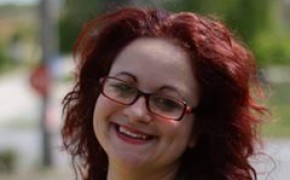AquaPhone festival features literature from HUN&SK and acts as a cultural bridge. It contributes to the preservation and valorisation of an intangible heritage.
The Maria Valeria bridge crosses the Danube connecting Štúrovo in SK with Esztergom in HUN. It was damaged in 1944, rebuilt and opened in 2001. Until then, the Hungarian population was reduced to a minority, relations between the two countries remained fraught. The bridge was not to blame for the fact that the two countries couldn’t find a way to communicate. It was the absurd policies of the totalitarian regimes that made matters more difficult, stopping people from travelling and visiting each other. Friends and relatives found a way to talk to each other. They went to the opposite banks of the river and exchanged news, coded messages. Water could be relied on to carry the sound.
The AquaPhone refers to this phenomenon, honouring all the lives whose secrets had been entrusted to the Danube, recalling this testimony of people's yearning to talk together, and of their inventive genius bridging borders and distances under difficult conditions. It acts as a cultural bridge between the nations.
It is a 1-hour multilingual cultural event with its accompanying events held each year. Poems, dialogues are read on opposite sides of the river, musicians improvise along. The public can only hear the chaotic soundscape, as it arrives on the other side.
Beneficiaries: inhabitants of Esztergom and Štúrovo, tourists
Stakeholders: Cultural Associations of Štúrovo and the Surrounding Area, Štefan and Viera Frühauf Fonds, Municipality of Štúrovo, Esztergom; artists musicians
Resources needed
-cca. 28000 eur/year for the whole festival/year, including the organisational costs of accompanying events and the fees of musicians, authors
-Cca. 8-10 persons, from which 1 works 8 hours/day, 5day a week in May, and June, the others are helping him during in the implementation. All volunteers.
Evidence of success
The practice contributes to the preservation and valorisation of an intangible heritage, what is a difficult period of people who were isolated from each other by the River due to the consequence of the war destroying the bridge. The AquaPhone preserves the memory of this period as heritage and act as a warning sign for not making same mistakes.
Results:
- organised 14 times
-14 new literary works and musics about Danube, bridging
-Cca. 500 participants/year
-1 new book published
Difficulties encountered
As the festival is open –aired the main challenge is the weather. As the idea beyond the event is to connect Esztergom and Štúrovo one of the challenges is how to do that. Another challenges is to figure out how to involve more participants as nowadays this type of arts attracts few people
Potential for learning or transfer
Organising a similar event is quite easy and can be done almost everywhere, but should be tailor made. It can be a way of remembrance of an important historical event, or can draw attention to a forgotten tradition, natural or cultural heritage through art.
Its innovative character is that transforms a habit of people in a historical period into an art performance presented in the current period. This is an innovative and a positive way of remembering and preserving intangible heritage. This practice is adaptable as not strongly place specific, not requires huge financial resources for implementing and sustaining it. In addition, it can be applied in whole Europe, especially in the once Soviet block of Europe.
The 3 main adaptable elements of the practice are:
-a historical story related to the isolation by a water body
-a water body which distinguish human settlements (river, lake, channel, sea bay)
-sound based art perform
Tags: Heritage, Crossborder region, Cultural, International, Event








